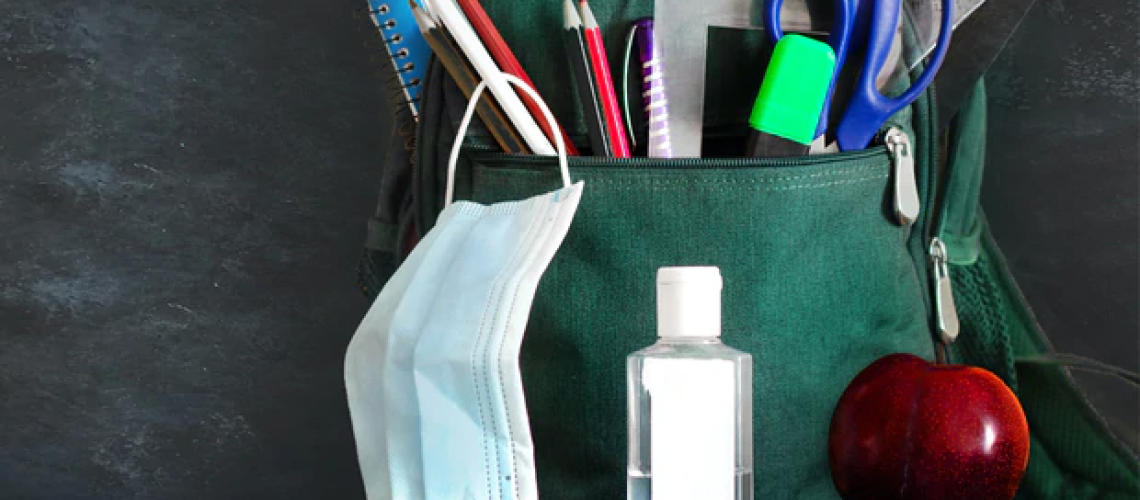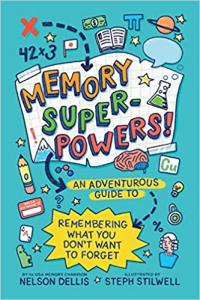Memory Tips You Can Share With Your Kids Before Back-to-School Remote Learning

The new school-year is already here, and for many it’s still remote. Who would have thought six months after the start of a pandemic, we’d still be in the same situation (or arguably worse)?
The remote-learning experiment that was the end of last school year didn’t fare too well in many of our eyes. Students struggled to stay as engaged as they would have in a physical classroom, some families struggled with the technology gap, and many working parents struggled with juggling their jobs and being make-shift home teachers.
Thankfully, we’re a little more prepared this time around, but there are a lot of available resources to make the remote-learning experience a lot smoother (and more engaging).
As a 4x USA Memory Champion, my expertise is obviously surrounding memory (and learning). I have just released my new kids memory technique book called Memory Superpowers!It’s the perfect companion book to help grade-school kids master their memory––arguably one of the most important things a student needs when learning.
In my experience, memory is completely trainable. More or less, we are all born with the same skill-level when it comes to remembering things. But there are techniques your kids can learn to help them feel like they have memory superpowers!
Don’t believe me?
The techniques that I, and other memory competitors use to memorize seemingly impossible things like, full decks of cards in under 30 seconds, 1000s of digits in under an hour, and 100s of names of people, are completely learnable. For one, I couldn’t do any of those things before I decided to learn and practice them. Your child can do the same.
The basics of memory techniques are taught throughout my book, but they are founded on a super simple three-step process:

SEE––LINK––GO!
SEE: When faced with information to memorize, the hardest part is making it interesting. We don’t memorize things well when they aren’t interesting to us. So we need to trick our brain into making it think it’s interesting. The way we do that is by SEE. SEE is a step where you take what you’re memorizing and transform it into something you can visualize in your mind. Let’s take a 5th grade vocabulary word like abolish as an example. That word might be completely new to a student and difficult for them to remember. So, instead of dealing with it head on as the word abolish, have them imagine it as a bowl filled with ash (a-bowl-ash = abolish). It’s definitely not the same thing, but it’s a cue to help a student SEE the information better.
LINK: Our brains form neural pathways between pieces of information in our brains. The stronger those connections (and the more connected they are to other parts of the brain), the stronger the recall will be for that thing. The way to hack this is to take your image from SEE and LINK it to something that’s already firmly planted in your brain. How about the definition of abolish, which is “formally put an end to.” A student might not have that definition memorized verbatim in their mind, but they would be able to understand what it means. Have them connect their bowl filled with ash to that definition. This leads me to the third step…
GO!: To make that LINK act like super-glue, you have to make the image you come up with as crazy and as silly as possible. Imagine filling that bowl with tons and tons of ash from the fireplace until your parents come along and scold you to STOP doing that. They formally put an end to it by yelling at you, or better yet, maybe they wave a massive red flag to indicate that you should stop. Over the top is better!
You now have an image of a bowl of ash, and your parents making you stop. It sounds silly, but you now have that word memorized. If someone asks you to remember the definition of abolish, you’ll remember that crazy image of your parents yelling at you to stop. And the reverse will work too. If someone says, what’s a word to describe something formally being stopped––Aha! it’s that bowl of ash! ABOLISH!
What’s great about these techniques (other than the fact that they help make things stick better), is that they’re fun and engaging. No more boring vocabulary words or times tables, for that matter. And with a little bit of practice everyday, your children’s memory will get faster and more habituated with this process. Then, inevitably, it will lead to a mastered life-long skill that will benefit them in this every-increasingly information-loaded world.
Nelson Dellis is a 4x USA Memory Champion and Grandmaster of Memory. He has authored two books on memory techniques: Remember It!(for adults) and most recently, a book targeted to grade-school kids to help them improve their memory to remember better: Memory Superpowers! An Adventurous Guide To Remembering What You Don’t Want To Forge
Disclaimer: The views and opinions expressed in this article are those of the Author(s) and do not necessarily reflect the views, policy or position of Trident Brands Incorporated or affiliated entities.
The content herein is not intended to be a substitute for professional medical advice, diagnosis, or treatment. Always seek the advice of your physician or other qualified health practitioner with any questions you may have regarding a medical condition.

![]()
 Discl
Discl![]() aimer: The views and opinions expressed in this article are those of the Author(s) and do not necessarily reflect the views, policy or position of Trident Brands Incorporated or affiliated entities. It is important to understand that while a dietary supplement may have been shown through clinical study to be beneficial for certain health conditions, they are not intended to treat, diagnose, cure or alleviate the effects of any disease.
aimer: The views and opinions expressed in this article are those of the Author(s) and do not necessarily reflect the views, policy or position of Trident Brands Incorporated or affiliated entities. It is important to understand that while a dietary supplement may have been shown through clinical study to be beneficial for certain health conditions, they are not intended to treat, diagnose, cure or alleviate the effects of any disease.
Most importantly, the content herein is not intended to be a substitute for professional medical advice, diagnosis, or treatment. Always seek the advice of your physician or other qualified health practitioner with any questions you may have regarding a medical condition.
*These statements have not been evaluated by the Food and Drug Administration. This product is not intended to diagnose, treat, cure, or prevent any disease

